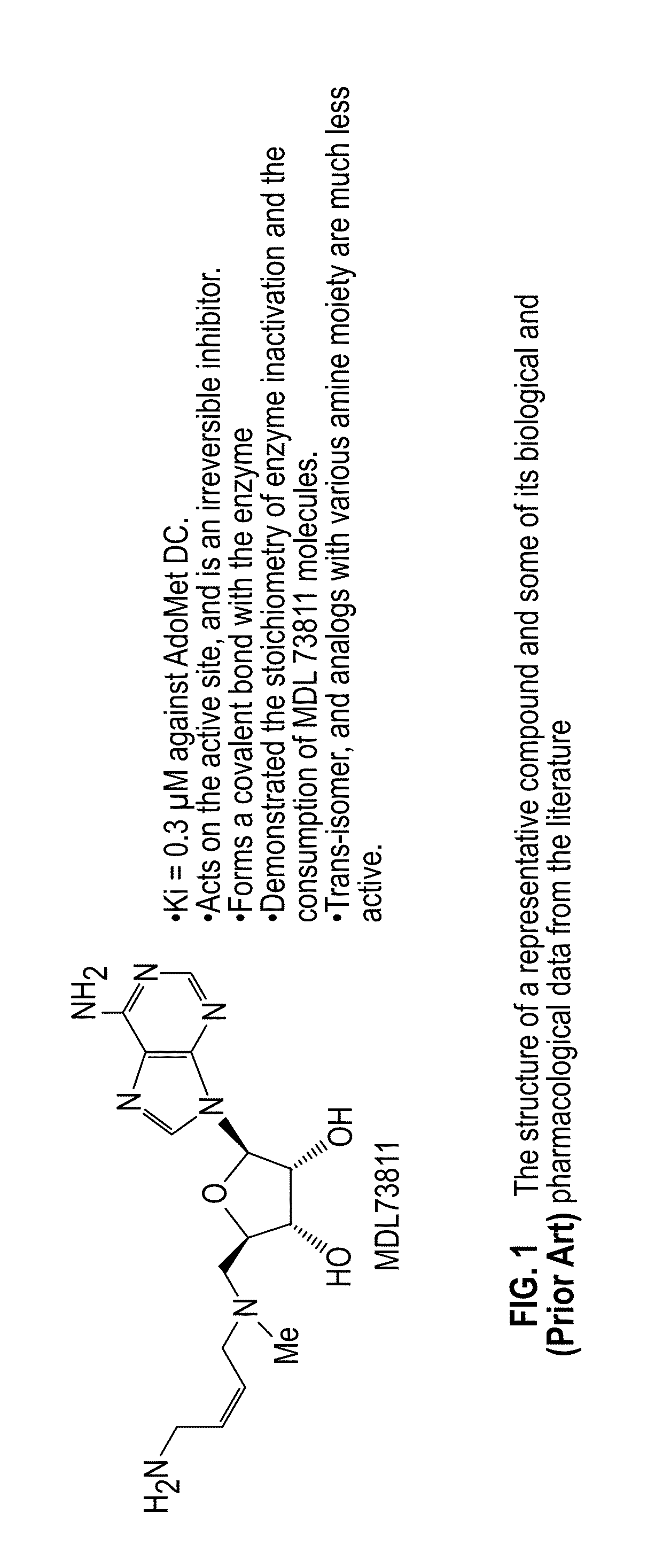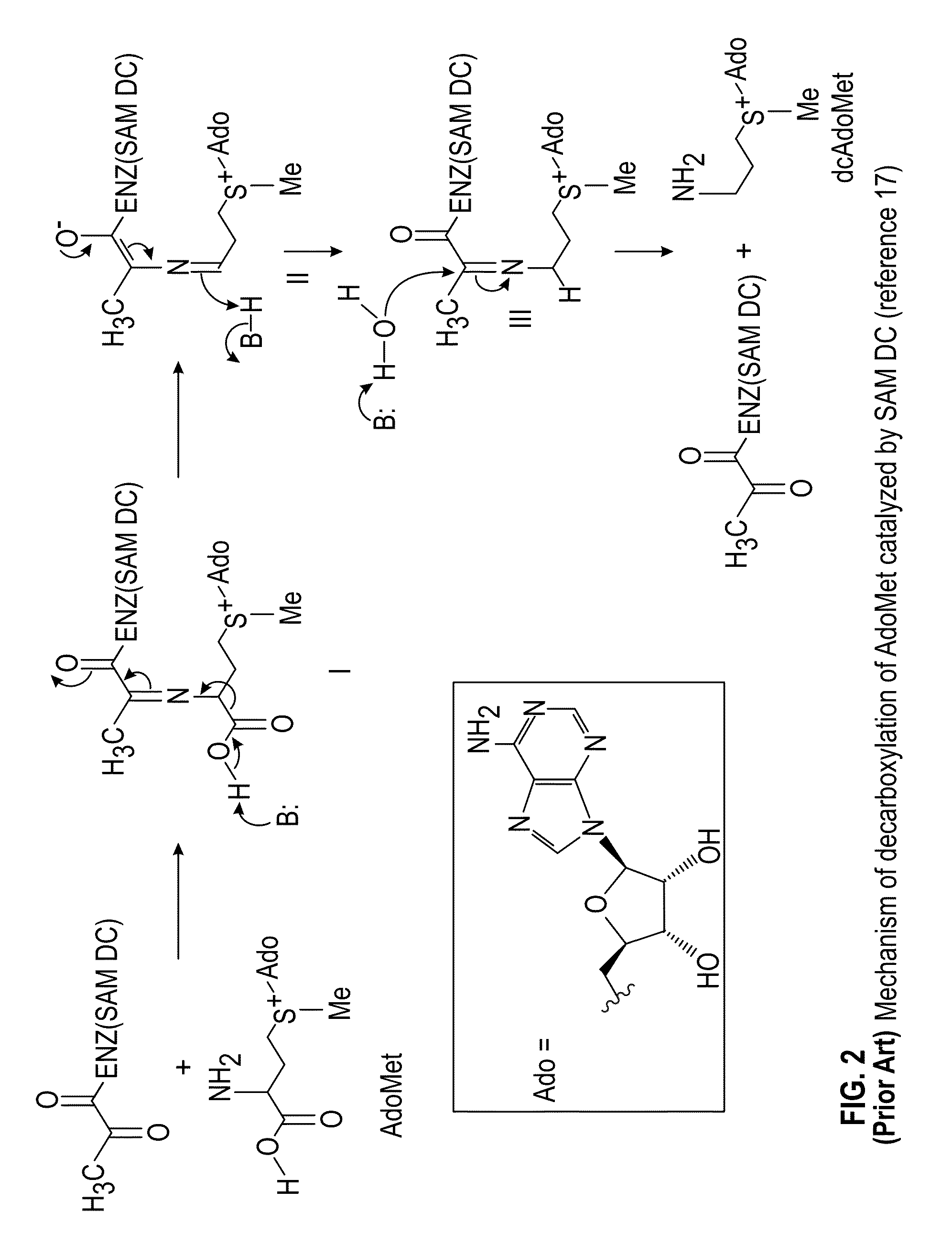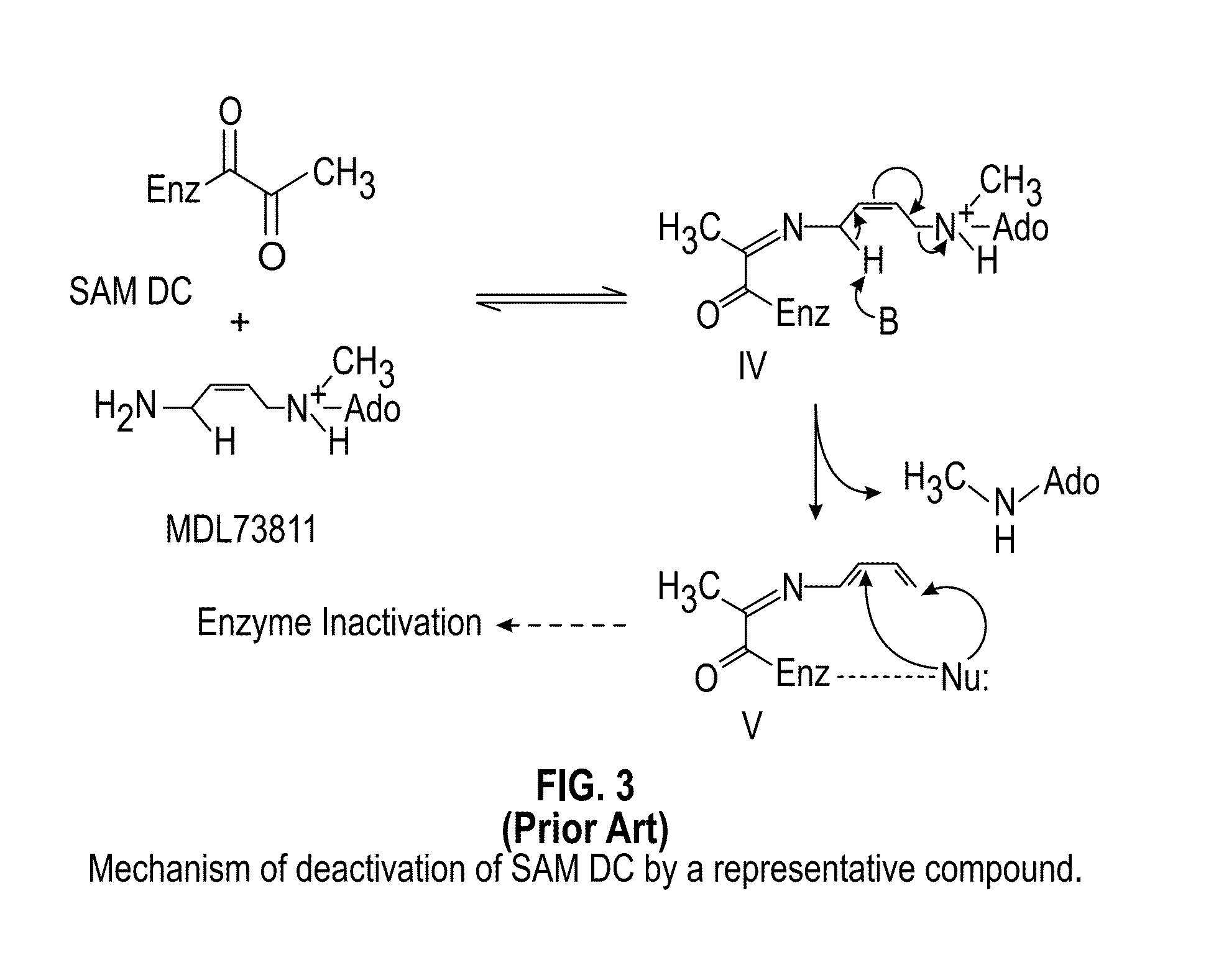Inhibitors of S-adenosyl-L-methionine decarboxylase
a technology of s-adenosyl lmethionine and inhibitors, which is applied in the field of inhibitors of sadenosyl lmethionine decarboxylase, can solve the problems of limited in vivo activity, unsatisfactory drug candidate, and optimal pharmacokinetic profil
- Summary
- Abstract
- Description
- Claims
- Application Information
AI Technical Summary
Benefits of technology
Problems solved by technology
Method used
Image
Examples
example 1
Synthesis of Compound 4
[0104]Starting with commercially available 8-bromoadenosine (1), the hydroxyl groups of the ribose moiety were transiently protected by treatment with hexamethyldisilazane and catalytic ammonium sulfate. The crude intermediate underwent palladium catalyzed coupling reaction with trimethylaluminum to install the methyl group at the 8-position. The product, without purification, was deprotected directly to afford 8-methyladenosine derivative (2). Treatment of 2 with thionyl chloride in pyridine afforded the chloride derivative 3, which was subjected to reaction with excess methylamine under microwave irradiation to yields the amine 4. Allylic displacement with cis-1-(t-butoxycarbonylamino)-4-chloro-2-butene under catalytic halide exchange conditions proceeded to form amine 5, which was then deprotected with methanolic hydrogen chloride and purified by silica gel chromatography to afford the final product.
example 2
Synthesis of Compound No. 3
[0105]2-Chloroadenosine (6) was protected as an acetonide (7) by reaction with methyl ketal, and the 5′-hydroxyl was converted a tosylate (8) using tosyl chloride and pyridine. The amine moiety was then introduced through nucleophilic displacement to yield intermediate 9. Deprotection of the BOC group from the primary amine and purification by column chromatography yielded the desired product.
example 3
Synthesis of Compound No. 1
[0106]Araadenosine (10) underwent a series of reactions: silyl protection on the hydroxy groups, benzoylation on the N6, deprotection of silyl groups with ammonium hydroxide, and subsequently protection on the 3′- and 5′-hydroxyls with THP by reaction with DHP in the presence of catalytic amount of pTsOH to provide the protected araadenosine (11). The remaining 2′-hydroxyl was converted to a triflate through the reaction with triflate anhydride, which, without purification, was immediately subjected to TBAF (tetrabutylammonium fluoride) mediated fluoride displacement to afford 12. Acid catalyzed methanolysis removed the THP groups to furnish the N-protected fluoroadenosine intermediate 13, which was selectively mesylated on the 5′-hydroxyl and then displaced by a BOC-protected diamine to generate 14. Deprotection of the benzoyl group at N6 through aminolysis followed by acid catalyzed carbamate cleavage yielded Compound No. 1.
PUM
| Property | Measurement | Unit |
|---|---|---|
| concentration | aaaaa | aaaaa |
| concentration | aaaaa | aaaaa |
| volume | aaaaa | aaaaa |
Abstract
Description
Claims
Application Information
 Login to View More
Login to View More - R&D
- Intellectual Property
- Life Sciences
- Materials
- Tech Scout
- Unparalleled Data Quality
- Higher Quality Content
- 60% Fewer Hallucinations
Browse by: Latest US Patents, China's latest patents, Technical Efficacy Thesaurus, Application Domain, Technology Topic, Popular Technical Reports.
© 2025 PatSnap. All rights reserved.Legal|Privacy policy|Modern Slavery Act Transparency Statement|Sitemap|About US| Contact US: help@patsnap.com



